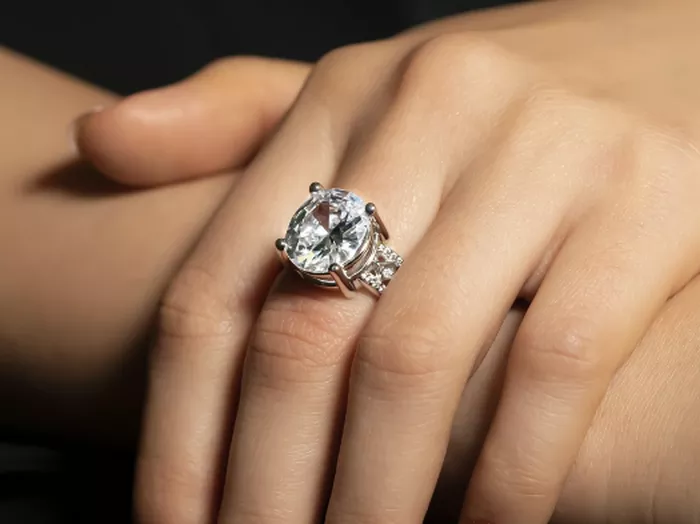Diamond rings are celebrated symbols of love, commitment, and luxury, cherished for their brilliance and timeless elegance. Traditionally associated with engagements and marriages, diamond rings have also become popular as gifts for significant milestones and achievements. However, despite their widespread appeal, there are considerations and circumstances where wearing a diamond ring may not be suitable or advisable. In this comprehensive guide, we explore the various factors and situations where individuals might reconsider wearing a diamond ring, providing insights into cultural, ethical, practical, and personal reasons that may influence this decision.
The Cultural and Symbolic Significance of Diamond Rings
Diamonds have held symbolic significance across cultures for centuries. They are often associated with love, purity, wealth, and status, making them a coveted choice for engagement rings and other jewelry pieces. In many societies, wearing a diamond ring signifies commitment, longevity, and the promise of a future together. However, cultural norms and beliefs can also influence whether wearing a diamond ring is appropriate in certain contexts.
Ethical Considerations: Conflict Diamonds and Responsible Sourcing
One of the primary ethical concerns surrounding diamond rings revolves around the issue of conflict diamonds, also known as blood diamonds. These diamonds are mined in war zones and sold to finance armed conflicts against governments, undermining peace and stability in affected regions. The Kimberly Process Certification Scheme (KPCS) was established to prevent the trade of conflict diamonds, but challenges remain in ensuring diamonds are ethically sourced throughout the supply chain.
1. Environmental Impact of Diamond Mining
Ecological Footprint: Diamond mining, particularly open-pit mining and marine mining, can have significant environmental consequences, including habitat destruction, soil erosion, and water pollution.
Carbon Footprint: The carbon footprint of diamond mining and processing contributes to greenhouse gas emissions, impacting climate change.
2. Labor Practices in Diamond Mining
Working Conditions: Some diamond mines have been criticized for poor working conditions, including low wages, lack of safety standards, and exploitation of laborers.
Child Labor: In certain regions, including parts of Africa, concerns persist regarding child labor in diamond mines despite efforts to eradicate this practice.
Practical Considerations: Lifestyle and Everyday Wear
While diamond rings are durable and meant to be worn daily, certain lifestyles or professions may pose challenges or risks to wearing such jewelry on a regular basis. Practical considerations include:
1. Physical Activity and Manual Labor
Risk of Damage: Activities such as sports, gardening, or manual labor can increase the risk of damaging or losing diamonds due to impacts or exposure to chemicals.
Safety Concerns: In occupations that involve machinery or heavy equipment, wearing a diamond ring may pose safety risks, such as catching on machinery or causing injury in accidents.
2. Maintenance and Upkeep
Regular Cleaning: Diamond rings require regular cleaning to maintain their brilliance and sparkle. Individuals with busy schedules or limited time for maintenance may find this upkeep challenging.
Personal and Cultural Reasons
1. Personal Beliefs and Values
Anti-materialism: Some individuals choose not to wear diamond rings or fine jewelry due to personal beliefs against materialism or preference for simplicity.
Alternative Preferences: Individuals may prefer alternative gemstones or symbolic jewelry pieces that align with their personal values or cultural traditions.
2. Cultural and Religious Considerations
Cultural Norms: In certain cultures or religious traditions, there may be specific guidelines or customs regarding the wearing of diamond jewelry, including engagements, weddings, and formal occasions.
Symbolic Meaning: The symbolism associated with diamonds may differ across cultures, influencing whether individuals choose to wear diamond rings based on cultural significance or personal beliefs.
Medical and Physical Considerations
1. Skin Sensitivities and Allergies
Metal Allergies: Some individuals may have allergic reactions to metals commonly used in diamond ring settings, such as nickel or certain alloys.
Skin Sensitivity: Sensitivity to certain cleaning agents or chemicals used in jewelry maintenance may also influence wearing preferences.
2. Physical Comfort
Ring Size and Fit: Improperly fitted rings can cause discomfort, skin irritation, or restrict movement, prompting individuals to reconsider wearing diamond rings on a daily basis.
See Also: What Is the Largest Diamond Ring in the World?
Alternatives to Diamond Rings
For individuals who choose not to wear diamond rings or prefer alternatives, several options exist that offer beauty, symbolism, and personal significance:
1. Gemstone Rings
Sapphires, Rubies, Emeralds: These colorful gemstones offer vibrant alternatives to diamonds and hold symbolic meanings that resonate with personal beliefs or cultural traditions.
2. Personalized and Symbolic Jewelry
Custom Designs: Creating custom jewelry pieces that reflect personal milestones, values, or symbols can provide a unique and meaningful alternative to traditional diamond rings.
3. Vintage and Antique Jewelry
Historical Significance: Vintage or antique jewelry pieces often come with rich histories and unique craftsmanship, appealing to individuals who appreciate the character and story behind each piece.
Conclusion
While diamond rings continue to be cherished symbols of love, commitment, and celebration, there are various considerations and circumstances where individuals may opt not to wear diamond rings. From ethical concerns surrounding conflict diamonds and environmental impact to practical considerations related to lifestyle and everyday wear, the decision to wear a diamond ring is deeply personal and influenced by cultural, ethical, practical, and individual factors. Alternatives to diamond rings provide diverse options for expressing personal style, values, and symbolic meaning. Ultimately, whether choosing a diamond ring or an alternative piece of jewelry, the decision should reflect personal beliefs, values, and preferences while honoring the significance of the occasion or milestone it represents

